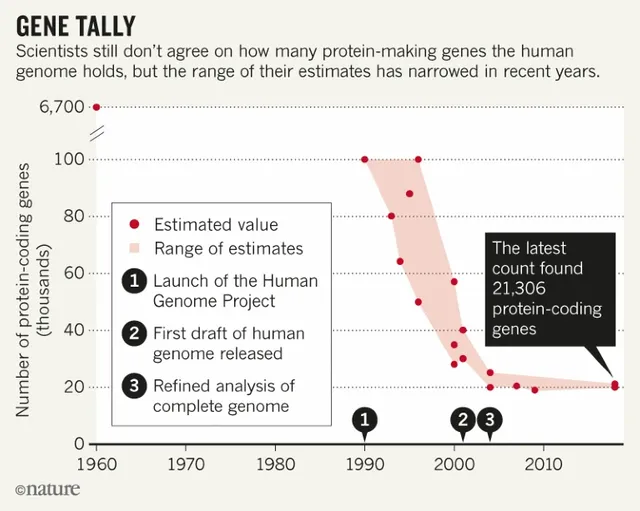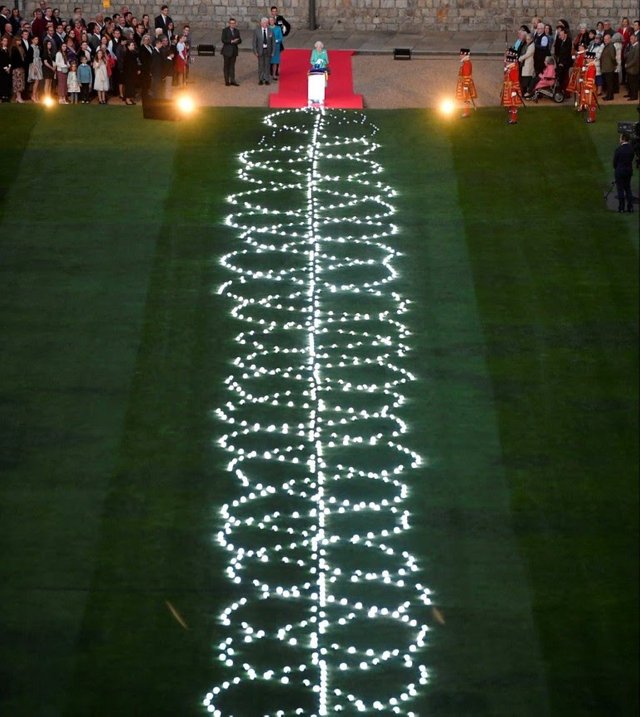THE THIRD STRAND OF BEAST DNA
The human beings have 46 chromosomes that carry DNA helix consisting of two strends. In 1999 The New York Times published an article about human genome. "A new calculation of the number of human genes puts the total far higher than previous estimates, meaning that the human organism is considerably more complex than hitherto expected.
The new estimate, by Incyte Pharmaceuticals of Palo Alto, Calif., sets the number of human genes at 140,000. (72,000 in each strand of the DNA helix.) Each gene specifies the manufacture of one or more proteins, the working parts of the body. As the programming instructions of the human cell, the genes provide all the information needed to develop, operate and maintain the human organism."*
"Haploid human genomes, which are contained in germ cells (the egg and sperm gamete cells created in the meiosis phase of sexual reproduction before fertilization) consist of 3,054,815,472 DNA base pairs (if X chromosome is used), while female diploid genomes (found in somatic cells) have twice the DNA content.
The human genome is a complete set of nucleic acid sequences for humans, encoded as DNA within the 23 chromosome pairs in cell nuclei and in a small DNA molecule found within individual mitochondria. These are usually treated separately as the nuclear genome and the mitochondrial genome." Wikipedia
Ok, so what is the number of genes in the human DNA? WAell, it depends on who you ask. I did some digging and the numbers vary quite dramatically. Am not a geneticist so I couldn't really wrap my head around the Wikipedia article, so I went searching elsewhere.
According to MedLine.gov March 22 2021, "An international research effort called the Human Genome Project, which worked to determine the sequence of the human genome and identify the genes that it contains, estimated that humans have between 20,000 and 25,000 genes. Every person has two copies of each gene, one inherited from each parent."
"In 2000, with the genomics community abuzz over the question of how many human genes would be found, Ewan Birney launched the GeneSweep contest. Birney, now co-director of the European Bioinformatics Institute (EBI) in Hinxton, UK, took the first bets at a bar during an annual genetics meeting, and the contest eventually attracted more than 1,000 entries and a US$3,000 jackpot.
Bets on the number of genes ranged from more than 312,000 to just under 26,000, with an average of around 40,000. These days, the span of estimates has shrunk — with most now between 19,000 and 22,000 — but there is still disagreement (See 'Gene Tally')."****

HM The Queen not too long ago has launched the three strands DNA helix made out of lights on the ground commemorating a scientific breakthrough. Could it be that an additional 72,000 genes are being added to the human genome, by way of vaccines perhaps and GMOs, and if so then the total number of genes would be 216,000 which is 600 × 60 × 6 aka the mark of the beast.

Her Majesty set of a chain of lights along the Quadrangle linked to Buckingham Palace (Picture: Reuters)
"“A Beautiful Delusion,” by William Kinney has an interesting interpretation of Revelation 14:1-5, The Lamb and the 144,000. Mr. Kinney postulates that the number 144,000 refers to the individual’s original genetic code, not the number of people who will be saved. 144,000 is the number of human genes mentioned by Dr. Crick in his interview with Readers Digest. 144,000 represents the number of genes that comprise the immortal life genome. Those individuals whose genes have not been tampered with, are “virgins.” This means that those individuals whose 144,000 genes are intact, will be sealed with the Name of the Lamb and His Father. They are those who have victory over the beast." **
"Scientists have been storing digital data in DNA since 2012. That was when Harvard University geneticists George Church, Sri Kosuri, and colleagues encoded a 52,000-word book in thousands of snippets of DNA, using strands of DNA's four-letter alphabet of A, G, T, and C to encode the 0s and 1s of the digitized file. Their particular encoding scheme was relatively inefficient, however, and could store only 1.28 petabytes per gram of DNA. Other approaches have done better. But none has been able to store more than half of what researchers think DNA can actually handle, about 1.8 bits of data per nucleotide of DNA. (The number isn't 2 bits because of rare, but inevitable, DNA writing and reading errors.)
Erlich thought he could get closer to that limit. So he and Dina Zielinski, an associate scientist at the New York Genome Center, looked at the algorithms that were being used to encode and decode the data. They started with six files, including a full computer operating system, a computer virus, an 1895 French film called Arrival of a Train at La Ciotat, and a 1948 study by information theorist Claude Shannon. They first converted the files into binary strings of 1s and 0s, compressed them into one master file, and then split the data into short strings of binary code. They devised an algorithm called a DNA fountain, which randomly packaged the strings into so-called droplets, to which they added extra tags to help reassemble them in the proper order later. In all, the researchers generated a digital list of 72,000 DNA strands, each 200 bases long.
They sent these as text files to Twist Bioscience, a San Francisco, California–based startup, which then synthesized the DNA strands. Two weeks later, Erlich and Zielinski received in the mail a vial with a speck of DNA encoding their files. To decode them, the pair used modern DNA sequencing technology. The sequences were fed into a computer, which translated the genetic code back into binary and used the tags to reassemble the six original files. The approach worked so well that the new files contained no errors, they report today in Science. They were also able to make a virtually unlimited number of error-free copies of their files through polymerase chain reaction, a standard DNA copying technique. What's more, Erlich says, they were able to encode 1.6 bits of data per nucleotide, 60% better than any group had done before and 85% the theoretical limit."***
** https://motherandrefuge.com/the-lamb-and-the-144000/
*** https://www.science.org/content/article/dna-could-store-all-worlds-data-one-room
**** https://www.nature.com/articles/d41586-018-05462-w
♡
_ \ \ | / / _